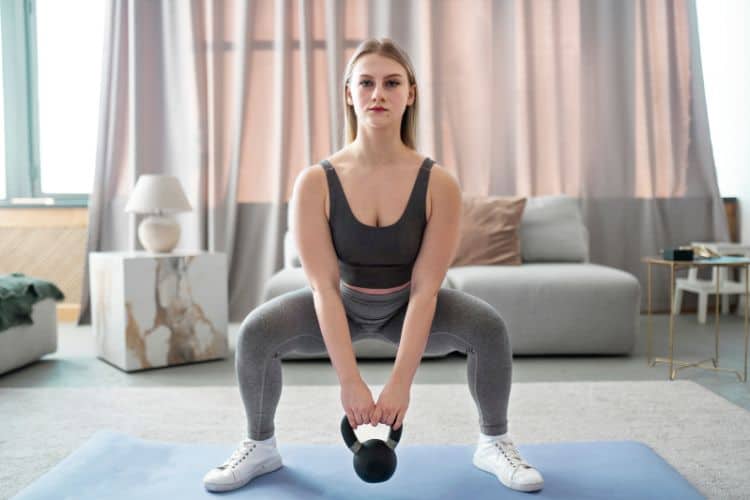30 Minute Progressive Overload Workout You Can Do at Home
When it comes to getting stronger, building muscle, and staying consistent with your fitness goals, progressive overload is the secret ingredient. Many people assume that progressive overload requires heavy gym equipment, but the truth is you can apply this training principle effectively at home with just your bodyweight, resistance bands, or a set of dumbbells. In this guide, we’ll break down what progressive overload is, why it’s essential for muscle growth and fat loss, and how you can structure a 30-minute at-home progressive overload workout that fits into even the busiest schedule.
Progressive Overload Made Simple Quick 30 Minute Home Workout
Progressive overload is a principle of strength training where you gradually increase the stress placed on your muscles over time. This consistent challenge forces your body to adapt, leading to muscle growth, strength improvements, and better endurance.
Ways to apply progressive overload at home include:
- Increasing reps – Performing more repetitions of an exercise.
- Increasing sets – Adding more sets to your routine.
- Decreasing rest – Shortening recovery time between exercises.
- Slowing tempo – Controlling your movement to increase time under tension.
- Adding resistance – Using dumbbells, resistance bands, or weighted household items.
Benefits of a 30-Minute Progressive Overload Workout at Home
A 30-minute progressive overload routine offers unique benefits:
- Time-efficient: Perfect for busy schedules.
- Customizable: Can be done with no equipment or minimal gear.
- Effective for all levels: Beginners can start light, while advanced lifters can intensify the load.
- Supports strength and fat loss: Builds lean muscle while burning calories.
- Sustainable: Easier to stay consistent with shorter workouts.
How to Structure a 30-Minute At-Home Progressive Overload Workout
A good 30-minute session should target all major muscle groups with compound movements, followed by accessory exercises for balance and endurance.
- Warm-up – 3–5 minutes
- Strength & compound circuits – 20 minutes
- Core & conditioning – 5 minutes
- Cool down – Stretching
Warm-Up (3–5 Minutes)
Before diving into progressive overload, warming up prepares your muscles, increases circulation, and reduces the risk of injury.
Warm-Up Flow:
- Jumping jacks – 1 minute
- Arm circles & shoulder rolls – 30 seconds each
- Bodyweight squats – 10 reps
- Dynamic lunges – 8 reps per side
- Plank walkouts – 5 reps
30-Minute At Home Progressive Overload Workout Plan
Here’s a structured routine broken into circuits, focusing on progressive overload for each muscle group.
Circuit 1: Lower Body Strength (10 Minutes)
1. Squats (Bodyweight or Dumbbell)
- 3 sets x 12–15 reps
- Progression: Hold dumbbells, add reps weekly, or pause at the bottom.
2. Bulgarian Split Squats (Chair or Couch Support)
- 3 sets x 8–12 reps per leg
- Progression: Add dumbbells or increase range of motion.
3. Glute Bridge or Hip Thrusts
- 3 sets x 15 reps
- Progression: Add weight across hips or perform single-leg variations.
Tip: Track weekly improvements in reps or resistance to ensure overload.
Circuit 2: Upper Body Strength (10 Minutes)
1. Push-Ups
- 3 sets x 10–15 reps
- Progression: Decline push-ups, diamond push-ups, or weighted vest.
2. Bent-Over Rows (Dumbbell or Backpack)
- 3 sets x 10–12 reps
- Progression: Increase load or slow the tempo.
3. Pike Push-Ups (Shoulder Focus)
- 3 sets x 8–10 reps
- Progression: Move to handstand push-ups or elevate feet.
Circuit 3: Core & Conditioning (5–7 Minutes)
1. Plank with Shoulder Tap
- 3 sets x 30 seconds
- Progression: Extend time or add weighted plates.
2. Mountain Climbers
- 3 sets x 40 seconds
- Progression: Increase speed or add sliders.
3. Hollow Body Hold or V-Ups
- 3 sets x 12–15 reps
- Progression: Hold longer or add ankle weights.
Weekly Home Progressive Overload Plan (30-Minute Sessions)
To ensure progression, you’ll want to slightly increase intensity each week. Here’s a 4-week structure you can follow at home.
Week 1: Foundation
- Focus on correct form.
- Perform 2–3 sets per exercise.
- Keep rest periods at 45–60 seconds.
2: Volume Increase
- Add 1–2 extra reps per set.
- Slightly shorten rest periods.
- Incorporate resistance bands or household weights.
3: Intensity Boost
- Add an extra set (3–4 sets total).
- Slow down tempo for more time under tension.
- Introduce supersets (e.g., push-ups + plank).
4: Challenge Week
- Max out with higher reps (to failure).
- Reduce rest to 30–45 seconds.
- Try advanced variations (single-leg, decline push-ups, etc.).
Equipment Options for Progressive Overload at Home
While bodyweight alone is powerful, having minimal equipment helps keep workouts progressive.
- Dumbbells – Adjustable sets are ideal.
- Resistance bands – Affordable, portable, and versatile.
- Backpack with books – Easy homemade weight.
- Chair or couch – Perfect for Bulgarian split squats and tricep dips.
Nutrition and Recovery for Maximum Results
Progressive overload works best when paired with proper nutrition and recovery.
- Protein intake: Supports muscle repair. Aim for 0.8–1g per pound of body weight.
- Balanced diet: Include complex carbs, healthy fats, and hydration.
- Sleep: 7–9 hours per night for recovery.
- Active rest: Light stretching or yoga on rest days.
Common Mistakes to Avoid in Progressive Overload Training
Even at home, people often make mistakes that slow progress. Avoid these pitfalls:
- Increasing too fast – Jumping weight or reps too quickly leads to injury.
- Neglecting form – Quality reps matter more than quantity.
- Skipping recovery – Muscles grow during rest, not during workouts.
- Not tracking progress – Without logs, overload becomes inconsistent.
Why 30 Minutes Is Enough
You don’t need marathon workouts to see results. By focusing on intensity, progressive overload, and consistency, 30 minutes can stimulate muscle growth, burn fat, and improve endurance. The key is to push just a little harder each week.
The 30-minute at-home progressive overload workout is an efficient, adaptable, and sustainable way to achieve strength and fitness goals without stepping foot in a gym. Whether you’re a beginner looking to build a foundation or an experienced lifter seeking a time-efficient routine, progressive overload ensures you’ll continue to grow stronger week after week.
Consistency is the most important factor—stick with the program, track your progress, and challenge yourself. With the right mindset and gradual progression, your home can be the perfect training ground for lasting results.
Want more workout and video guide?
Follow us on Pinterest, Facebook, and Subscribe to our Newsletter and Stay tuned for FREE downloads of our App coming soon!
Most Recommended





